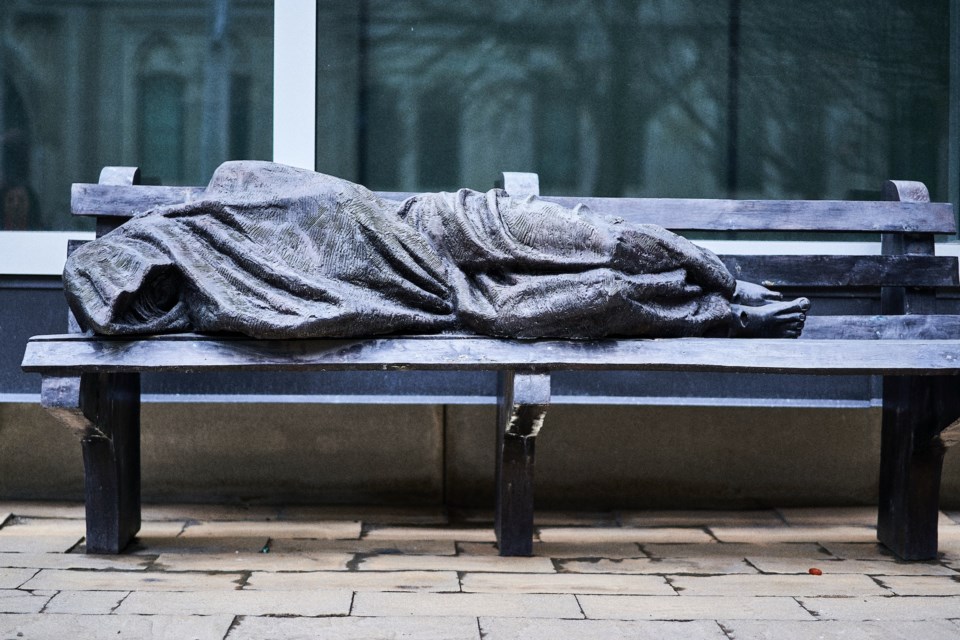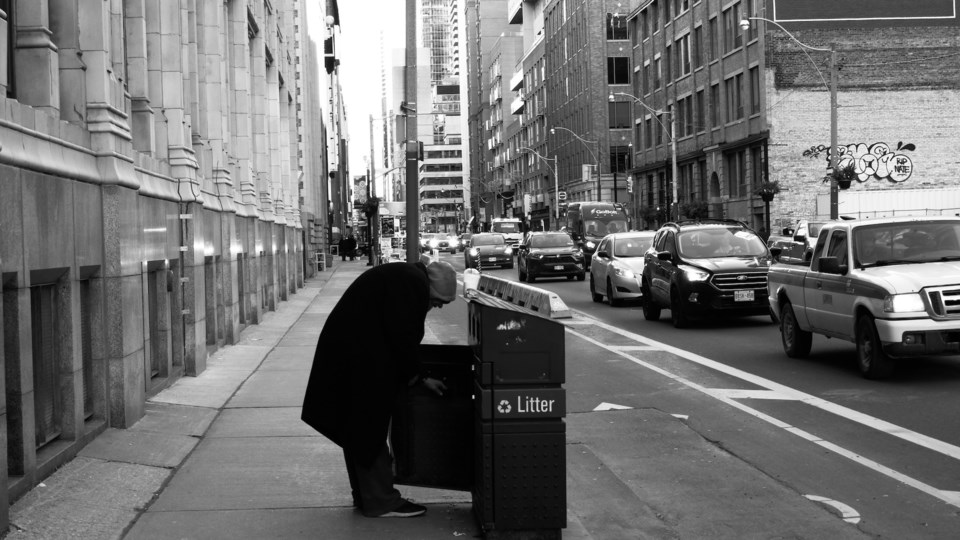This story is part of a partnership between The Green Line and The Trillium for readers who care deeply about Toronto and the people, policies, and politics at play. We’re pairing The Green Line’s unique community-driven, solutions-oriented journalism with The Trillium’s signature insider coverage of Ontario politics and policy to dig deep into the city’s problems and connect you with the plans the Toronto mayoral candidates are proposing to fix them. This article was originally published on TheGreenLine.TO
As part of our ongoing coverage of the 2023 Toronto mayoral by-election, The Green Line asked both our audience and all candidates to complete a survey, which included a question where they had to rank the policy issues they’d prioritize for the city today. For our audience, the issues of food insecurity and homelessness tied for second place. Our last explainer took on food insecurity, so this one will look at what each candidate has said about helping unhoused Torontonians, or moving them out of sight.
Of the 31 candidates for mayor who completed The Green Line’s survey, 11 wrote about homelessness when asked to describe the major issues facing Toronto today. One lived through it: Matti Charlton said they’d spent time on the streets, and linked to their 150-plus page platform dedicated to ending homelessness. Solutions proposed by other candidates include lobbying the province for increased Ontario Disability Support Program (ODSP) payments, starting a lottery to fund programs to help the homeless, investing in programs for youth, increasing access to housing, and expanding services and supports for mental health and addiction treatment.
Homelessness: The other side of the housing crisis
In the latter months of 2022, there were over 10,000 unhoused people in the City of Toronto, according to a recent city report. As mentioned in The Green Line’s housing explainer, the city considers itself to be in two different housing crises: one where workers earning moderate incomes struggle to find affordable rentals, and another where low-income earners struggle to access any housing at all.
Both sides of the housing crisis require different solutions: Although increasing access to affordable housing can help moderate-income workers find a home, there’s a vast and complex array of services needed to assist the already unhoused, and the leading mayoral candidates have proposals for many of them. Below, we’ll review each service, break down their purpose and look at what the candidates say they can do better.
Shelters
The city already plays a big role in providing services for unhoused people, overseeing or operating a total of 63 shelter spaces with more than 7,000 beds across Toronto. But the city can’t keep up with the rising demand and says it’s missing $414 million in necessary funding. Indeed, the city’s shelter system served 20,700 individual people last year but remains at capacity nearly every night.
Several leading candidates promised more support for the shelter system. Josh Matlow’s platform claims the system is “not safe or welcoming,” and pledges $15 million annually to improve its standards, plus $5 million for the Toronto Drop-In Network, which provides meals, showers and other resources. He also put forward a 10 per cent increase in the budget for City outreach programs and would conduct a full review of shelter policies toward residents. Likewise, Mitzie Hunter promised 400 new shelter beds, while Ana Bailão said she’d invest $5 million to help shelter operators employ and retain workers.
Refugees from other countries make up a growing share of shelter users, with nearly 3,000 in May 2023 alone — that’s five times the number from September 2021. Brad Bradford said he’d call on the federal government to “take responsibility for supporting refugees” and provide support for the shelter system housing them, while Bailão said she’d “hold the federal government accountable for their financial responsibility to support refugees and newcomers in Toronto.”

Respite Sites
The city operates 24-hour respite sites for unhoused people; it provides access to resting spaces, meals and referrals to support services. Matlow and Olivia Chow both promised $5 million to create more of these sites, while Hunter promised to do the same without stating a specific cost or number.
Supportive Housing
Another prong of the city’s approach to homelessness involves getting people off the street, and into “supportive” housing units, which also provide access to meals, health services, mental health and addiction support, and education. Hunter promised 2,000 more of these, while Bailão pledged 1,000 in 10 years. Bradford promised more units, but didn’t say how many, nor how he would deliver them. Rather than having the city build them, Saunders proposed negotiating with builders of new rental units to include supportive units in their projects, which would be run by nonprofits.
Through the Dufferin Grove Park Pilot Project, the city was able to convince people staying in 101 tents to move into shelters or housing. Bailão committed $5 million to expand the project city-wide, while Hunter promised five new outreach teams dedicated to getting homeless youth into supportive housing.
Rent Supplements
The City runs a rent supplement program, which provides a subsidy geared to their income to help them afford rent. Matlow promised to expand the qualifying criteria for these subsidies to help more unhoused Torontonians, and to create 2,000 new supplements. Chow pledged 1,000 supplements and said she’d get the province and federal governments to match her investment.
Mental Health and Addiction
Many members of Toronto’s shelter system suffer from addiction and mental health problems. According to CAMH, between 23 and 67 per cent of unhoused people in Canadian cities may have a mental illness, while city statistics show overdoses are common in shelters. Although mental health and addiction supports are a component of supportive housing, only Saunders addressed these issues in his response to The Green Line’s survey, offering a plan focused on “treatment and rehabilitation” that includes providing free space in city buildings to nonprofits who deliver these services and making unspecified “supports” available 24-7.
Human Rights vs. Public Safety
There’s also the tone in which each candidate presents Toronto’s homelessness crisis: Is it a human rights issue or a public safety issue? In The Green Line’s survey, most candidates viewed homelessness as a social issue requiring care for the people experiencing it. But others took a more outside-looking-in perspective, most notably Anthony Furey whose platform refers to the “blight” of tent encampments in city parks and includes an AI-generated image of dishevelled people crowding a downtown sidewalk. In response to our survey, Furey promised to “phase out drug injection sites in order to fund more treatment centres,” and “clear park encampments and boost homeless shelter space.”
Similarly, while Hunter pledged several policies to support unhoused people, her platform lists them under the theme of increasing safety. What’s more, in her response to The Green Line’s survey, she wrote, “As we fund our police service, we also need to prioritize community services, outreach programs and mental health supports to tackle the roots of our safety challenges,” before going on to discuss funding for shelters.
After several forceful removals of tent encampments under former mayor John Tory in the name of public safety, these choices of words may be telling when it comes to future policy decisions made by our next mayor.
You can read more about the province's impact on homelessness in an article by The Trillium, here.




